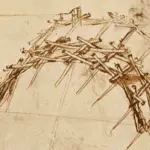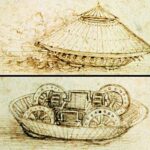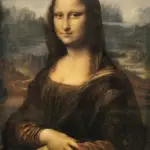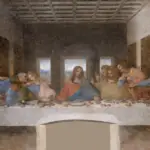Northern Renaissance art and culture were known for their vibrant transformation north of the Alps, offering a fresh perspective during the 15th and 16th centuries.
As Italy experienced its own Renaissance, Northern Europe saw a similar revival influenced by its Gothic tradition. The Northern Renaissance was characterized by its focus on intricate detail and realism in art, often depicting everyday life and religious themes.
Artists from this period, like those of the Flemish School, were pioneers in using oil paints to create vivid, lifelike textures and colors.
The movement flourished in regions such as Flanders (the Flemish Region of Belgium), France, and the Low Countries (Belgium, the Netherlands, and Luxembourg), where innovation in art and thought flourished alongside social upheavals such as the Reformation.
This era not only changed the artistic world but also helped in the transition towards modern Europe.
Northern Renaissance: Context and Origin
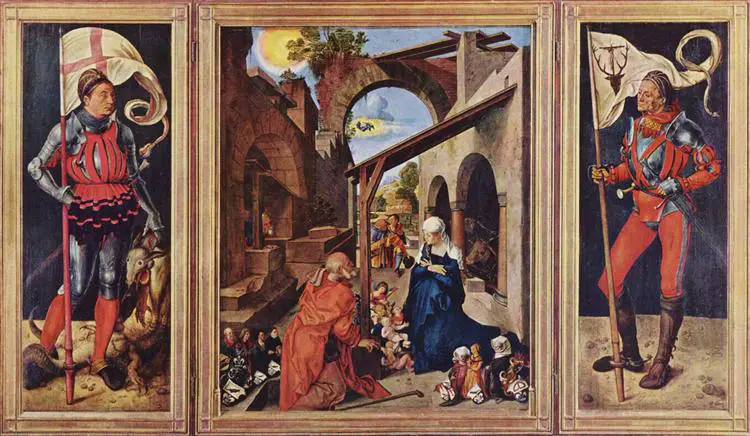
Paumgartner Altarpiece (center panel – The Nativity, wings – St. George, St. Eustace) by Albrecht Durer
The Northern Renaissance marked a significant European cultural transformation north of the Alps during the 15th and 16th centuries. This period was known for its distinct characteristics that set it apart from the Italian Renaissance, with unique influences and art styles.
Early Influences and Precursors
The Northern European Renaissance began as artists and intellectuals sought inspiration from the flourishing Italian Renaissance. Innovations like the printing press enabled ideas to spread quickly across Europe, playing a crucial role in the movement’s growth.
Additionally, exchanging ideas through trade and travel helped introduce new techniques and perspectives.
Artists like Jan van Eyck and Albrecht Dürer were instrumental in shaping the Northern Renaissance painting. They introduced oil painting techniques that allowed for greater detail and realism.
At the same time, the rise of humanism encouraged a shift from medieval art’s religious focus to more secular and diverse themes. This era also saw significant architectural developments, as seen in the works of renowned craftsmen.
Comparison with the Italian Renaissance
The Northern Renaissance differed from the Italian Renaissance in various respects. Northern Renaissance art focused more on detail, realism, and daily life, whereas Italian artists emphasized idealized landscapes and classical themes.
This distinction is evident in the intricate detail of Northern Renaissance paintings, which often featured naturalistic depictions of humans and nature.
Despite these differences, both movements were rooted in Renaissance humanism, celebrating individual achievement and exploring human potential.
The exchange of ideas between regions enriched the art scenes of Italy and Northern Europe. However, the Northern Renaissance was less influenced by classical antiquity, reflecting more Gothic traditions and local cultures.
This unique blend of innovation and tradition made the Northern Renaissance a pivotal chapter in European history.
Characteristics of Northern Renaissance Art
The Northern Renaissance distinguished itself through detail, symbolism, and technique advances. Emerging during the 15th and 16th centuries, this period shifted the focus from purely religious themes to a more diverse representation of art, incorporating daily life, nature, and classical themes.
Detail and Realism
Northern Renaissance art is known for its intricate detail and high realism. Artists like Jan van Eyck and Albrecht Dürer used precise techniques to achieve lifelike depictions in their works.
The focus on meticulous detail is evident in their portrayal of textures, fabrics, and human expressions, providing a sense of vivid reality.
This emphasis marked a departure from earlier, more stylized medieval art. A heightened interest in the natural world and human experience influenced the drive toward realism.
Tools like fine brushes allowed artists to capture minute details and complex light effects, resulting in paintings that conveyed depth and authenticity.
Use of Symbolism
Symbolism played a pivotal role in Northern Renaissance art. Everyday objects were often imbued with deeper meanings, reflecting spiritual and moral themes.
For example, flowers, animals, and even domestic items were depicted for visual appeal and as metaphors for virtues and vices.
Artists like Hieronymus Bosch employed complex allegories in their works to comment on human follies.
This symbolic language enriched the narrative quality of the paintings, allowing viewers to engage more deeply with the art.
The use of symbolism extended beyond religious contexts, incorporating elements of mythology and folklore and expanding the athematic range of the artwork
Oil Painting Technique
The Northern Renaissance saw significant innovation in oil painting. Northern Renaissance painters adopted oil paints, allowing for more vibrant colors and outstanding durability.
This medium enabled artists to create translucent layers, enhancing the depth and richness of their compositions.
Jan van Eyck is often credited with further developing this technique, refining methods that allowed for a wide range of tonal variations and shading complexities.
Oil paints allowed artists to achieve a new level of realism, controlling light and texture in ways that had not been previously possible. This innovation had a lasting impact on art, influencing subsequent generations of artists.
Landscape and Nature
Northern Renaissance art is notable for its interest in landscape and nature. Artists frequently depicted detailed backgrounds filled with natural scenery.
Pieter Bruegel the Elder, for instance, is renowned for his intricate landscapes, which capture the beauty and complexity of nature and are often filled with allegorical significance.
This included vivid depictions of rural life and seasonal changes, reflecting the human relationship with the environment.
These landscapes were realistic and symbolic, often illustrating paradise themes or moral lessons.
This focus on the natural world distinguished northern art from the more human-centered Italian Renaissance, highlighting regional differences in artistic representation.
Northern Renaissance Artists
The Northern Renaissance was a vibrant period characterized by unique artistic achievements. Northern artists produced remarkable works influenced by advancements in techniques distinct from those of the Italian Renaissance.
Jan van Eyck
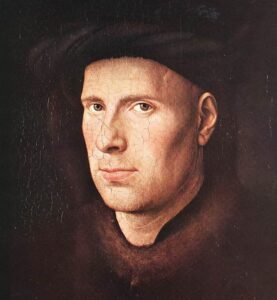
Jan van Eyck was a pivotal figure in northern European Renaissance art. Known for his detailed oil paintings, he mastered light and subtle color transitions.
His techniques allowed for the creation of realistic textures and intricate details, which influenced many later painters.
Van Eyck’s most famous work is the Arnolfini Portrait, which showcases his perspective and detail skills. His precise ability to capture the human experience made him a defining figure of the Northern Renaissance.
Albrecht Dürer
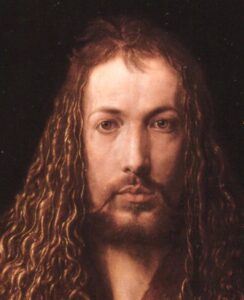
Albrecht Dürer was a renowned Northern Renaissance artist who excelled in printmaking, painting, and mathematical studies. His detailed self-portraits and engravings, such as “Melencolia I,” positioned him as a leading artist of the time.
Dürer bridged Northern and Italian Renaissance art by incorporating perspective and anatomical accuracy into his works.
During his travels to Italy, he exchanged ideas with Italian artists, enriching his works with their techniques and enhancing the scope of Northern Renaissance art.
Hieronymus Bosch
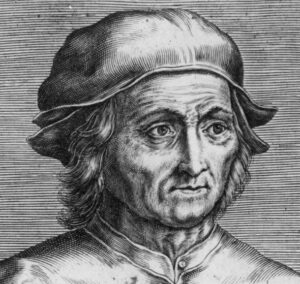
Hieronymus Bosch is known for his fantastical and often surreal imagery. Unlike many of his contemporaries, Bosch focused on imaginative and allegorical scenes, evident in works like “The Garden of Earthly Delights.” His paintings are filled with symbols and portrayals of human folly.
Bosch’s inventive style and thematic complexity reflected the spiritual and moral concerns of the Northern Renaissance period. His work remains a fascinating study of artistic genius and innovation in Northern Renaissance paintings.
Robert Campin
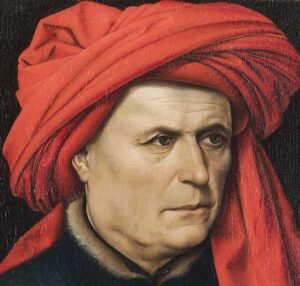
Robert Campin, also known as the Master of Flémalle, was a pioneering figure among Northern Renaissance painters. His use of disguised symbolism and realistic detail in works like “The Mérode Altarpiece” set a standard for later artists.
Campin’s paintings are known for their rich textures and lifelike details. He was one of the first Northern European artists to use oil painting extensively, which allowed for greater detail and depth and helped define Northern Renaissance artwork.
Pieter Bruegel the Elder
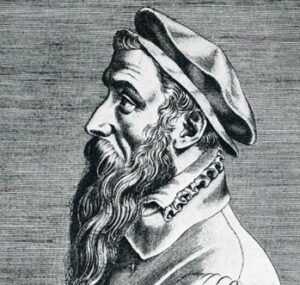
Pieter Bruegel the Elder was a master of genre scenes and landscapes. His works, such as The Hunters in the Snow, vividly capture the lives of ordinary people. They exhibit careful observation and a deep appreciation for nature.
Bruegel’s art reflects his time’s daily life and deeper societal themes. His innovative approach and focus on peasant life challenged the traditional subjects of religious themes, making him a significant figure in Northern Renaissance paintings. His impact on art is still studied and admired today.
Northern Renaissance vs Italian Renaissance
The Northern Renaissance emerged in Northern Europe. It mostly started in countries like Germany, France, and the Netherlands. It differed significantly from the Italian Renaissance, which was centered in Italy.
Both movements were essential in influencing European art and culture, but each possessed distinct features that differentiated them.
It was partly influenced by the spread of ideas from Italy through trade and the invention of the printing press.
Influence on Religion and Society
The Northern Renaissance marked a shift in cultural and religious dynamics across Europe. It brought about significant changes in religious practices due to the Protestant Reformation, altered the social structure with rising merchant influence, and fostered new educational movements that inspired intellectual growth.
The Reformation
The Protestant Reformation deeply influenced the Northern Renaissance. This movement altered religious practices by challenging the Catholic Church’s authority.
Crucial figures like Martin Luther and John Calvin emphasized personal faith and the importance of direct communion with God. These ideas gained traction in northern Europe, where religious devotion was questioned, leading to diverse interpretations of Christianity.
Through these reforms, the Church’s power diminished, and individuals began to prioritize personal interpretations of the Bible. This period saw the rise of Protestantism, which stressed the need to reform church practices.
This reform had a widespread impact, affecting everything from governance to art and reinforcing the region’s distinct religious characteristics.
Patronage and the Merchant Class
The rise of the merchant class during the Northern Renaissance led to significant changes in art and society. As trade flourished, merchants gained wealth and sought to display their status through patronage of the arts.
This shift placed less emphasis on noble or Church commissions and more on private individuals or families.
Merchant patronage greatly influenced the characteristics of Northern Renaissance art. Northern European Renaissance artists created works depicting everyday life, religious themes, and landscapes.
The artwork was often rich in details and symbolism, reflecting patrons’ personal and religious beliefs. The demand for such art further fueled cultural growth and anchored the region’s economy in innovation and trade.
Educational and Intellectual Movements
Educational reform was another key aspect of the Northern Renaissance, driven by the humanist movement.
Scholars advocated for education based on classical texts and critical thinking. During this period, more schools and universities were established, making education more accessible to a growing population segment.
Humanism in the Northern European Renaissance encouraged studying classical works for moral and philosophical insights.
Instead of focusing solely on religious teachings, education highlighted human potential and rationality.
These intellectual movements laid the groundwork for future scientific advancements and changes in societal thinking.
As a result, education became a tool for broadening perspectives and reforming societal norms, embedding a legacy of intellectual pursuit in the region.
Northern Renaissance: Start and End
The Northern Renaissance began in the late 15th century. It marked a period of cultural rebirth in Europe north of the Alps, and countries like Germany, France, and the Low Countries played significant roles.
This era increased the production of art and literature, inspired by the earlier Italian Renaissance.
Key Characteristics:
- Humanism: Focused on human potential and achievements.
- Realism in Art: Emphasized realistic detail and everyday subjects.
- Use of Oil Paints: Allowed for more vibrant and detailed art.
The Northern European Renaissance introduced new themes and techniques.
Unlike Italy, where classical motifs dominated, northern artists leaned towards religious themes. These themes were often more somber and depicted moral and ethical questions.
Major Artists and Contributions:
- Albrecht Dürer: Known for his engravings and paintings.
- Jan van Eyck: Developed advanced techniques in oil painting.
- Hans Holbein the Younger: Renowned for his portrait work.
The Northern Renaissance significantly influenced Northern European Renaissance art. These influences extended into printing advancements, impacting literature and education.
The end of the Northern Renaissance is more complicated to define. By the late 16th century, it gradually merged into the Baroque period.
This transition was marked by changing tastes in art and increased political and religious turmoil, which influenced the region’s culture and society.
Legacy and Impact on European Art
The Northern Renaissance significantly influenced European art, spreading artistic ideas and techniques. This period paved the way for the Baroque movement, which was characterized by detailed realism and the use of symbolism.
Spread to Western Europe
Northern Renaissance art began in regions like Belgium, the Netherlands, and Germany. It soon reached other parts of Western Europe, including France and England.
Artists from these countries incorporated techniques such as oil painting and complex iconography.
The use of vibrant colors and intricate details was particularly notable in the works of Jan van Eyck and Albrecht Dürer.
Art institutions embraced these new ideas. Patronage from wealthy families and religious institutions encouraged the development of this style. Many artists traveled across Europe, sharing and teaching these techniques.
Connection to the Baroque Period
The Northern Renaissance laid the groundwork for the Baroque period. Its detailed realism and emphasis on emotion influenced Baroque artists.
This can be seen in Baroque paintings’ dramatic lighting and composition, which use techniques similar to those pioneered in Northern Renaissance art. Works by Caravaggio and Rembrandt reflect this connection.
Baroque art expanded on Northern Renaissance ideas, creating more dynamic and theatrical pieces. This evolution shows how art movements build on one another.
The foundation laid by Northern Renaissance painters helped shape the next wave of European art and left a lasting impact on Western artistic traditions.
Final Thoughts
Northern Renaissance art stands out for its detail and vibrant color. Artists in the region were known for their attention to everyday life and domestic scenes, setting them apart from the classical themes common in the Italian Renaissance.
Humanism emerged as a significant influence during this period. Scholars and artists in the Northern Renaissance examined classical texts and incorporated this New Learning into their work.
This movement spread across France, Germany, and the Netherlands, showing that the Renaissance was not limited to Italy.
The Flemish School became renowned in this period, especially in Flanders’ cities like Bruges and Ghent. Painters developed techniques in oil painting that allowed them to create detailed, realistic images.
These innovations had a long-lasting impact on European art. Learn more about the Flemish School through detailed historical accounts.
Like the Italian Renaissance, Northern Renaissance artists were also influenced by advancements and discoveries, which helped them depict the world.
This parallels the scientific curiosity and inventiveness of figures like Leonardo da Vinci, whose works show the blend of art and science that defined the era.
Information on da Vinci’s inventions highlights similar themes of innovation.
Frequently Asked Questions
The Northern Renaissance was notable for its unique art style, prominent religious themes, and influential writers. This period impacted both art and culture in Northern Europe.
What were the defining characteristics of Northern Renaissance art?
Northern Renaissance art is known for its attention to detail, striking realism, and the use of oil paints. Artists focused on religious themes and depicted them with intricate details, showcasing human emotion and texture. This era also saw the rise of portraiture and landscape painting.
Are Adam and Eve in the Northern Renaissance?
The biblical figures Adam and Eve were popular subjects during the Northern Renaissance. Artists often depicted them in religious artworks, using these stories to explore themes of morality and the human condition. Their portrayal varied in style, reflecting the detailed and emotional nature of the period’s art.
Was the Northern Renaissance more religious?
Compared to the Italian Renaissance, the Northern Renaissance strongly emphasized religious themes. Art and literature often focused on biblical stories and moral lessons. The period coincided with the Reformation, thus deepening the spiritual aspect of art and society.
What was the most prominent religion during the Renaissance?
Christianity was the dominant religion across Europe during the Renaissance. Catholicism significantly influenced the Northern Renaissance, though it eventually intersected with the rise of Protestantism. Religious themes and ideas were prevalent in art and literature.
Who were two of the most famous writers of the Northern Renaissance?
Two of the most renowned writers of the Northern Renaissance are Desiderius Erasmus and Thomas More. Erasmus is known for his critical and scholarly works advocating religious reform. Thomas More is famous for his book Utopia, which explored social and political issues.
How did the Northern Renaissance influence everyday life during the period?
The Northern Renaissance brought about changes in art, thought, and society. Improvements in literacy and education allowed more people to access literature and the arts.
The emphasis on humanism and religion affected how people viewed themselves and their world, leading to societal shifts.
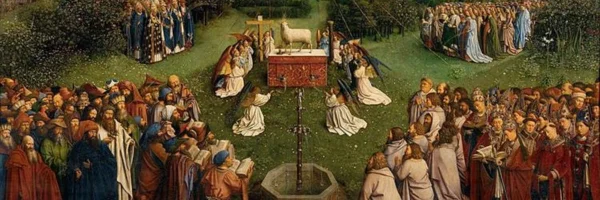
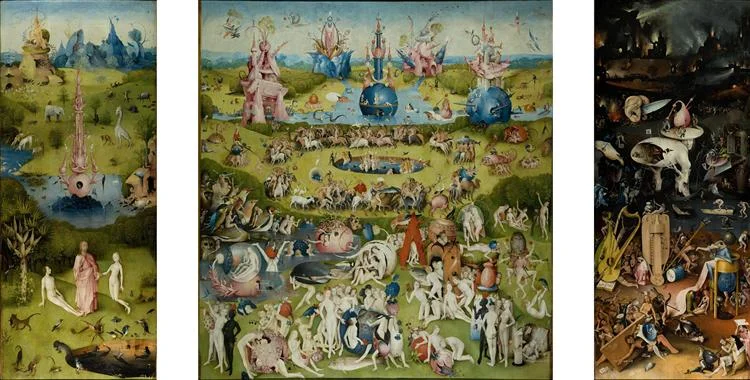
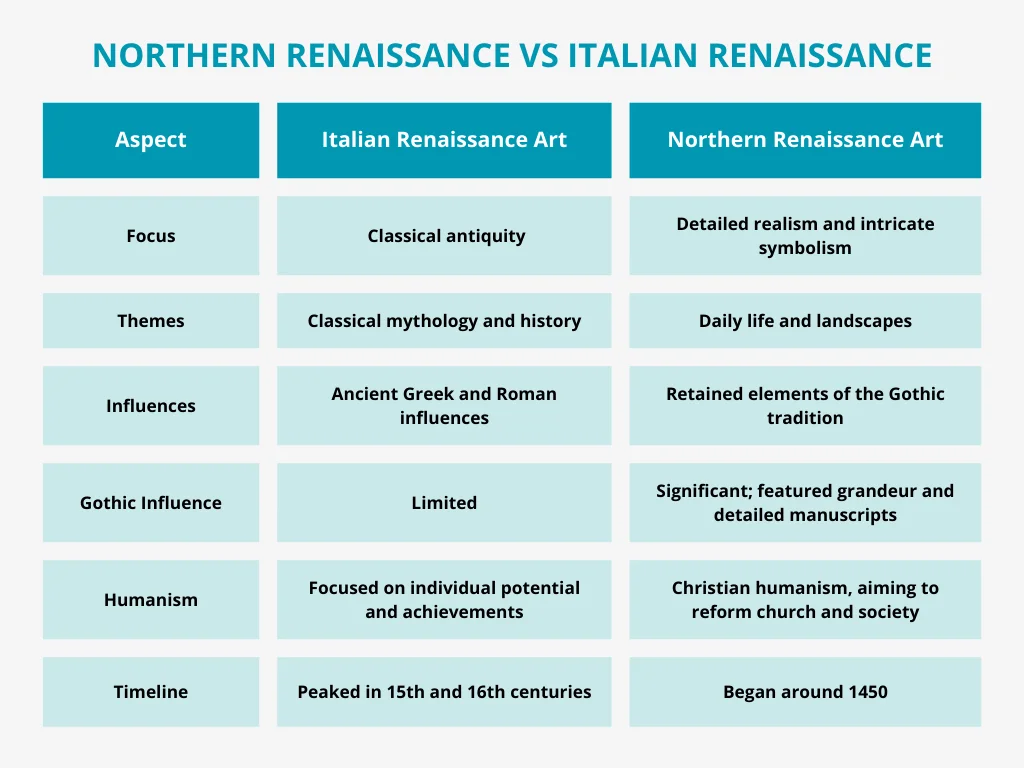
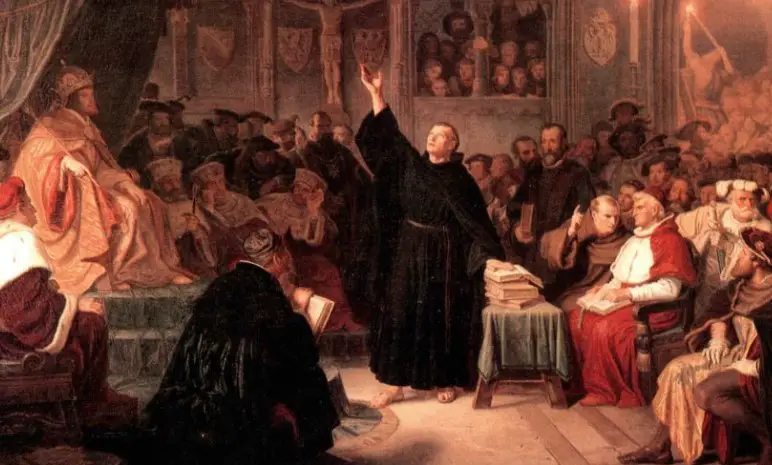
 I’m Leonardo Bianchi, the mind behind Leonardo da Vinci's Inventions. Thanks for visiting.
I’m Leonardo Bianchi, the mind behind Leonardo da Vinci's Inventions. Thanks for visiting. 